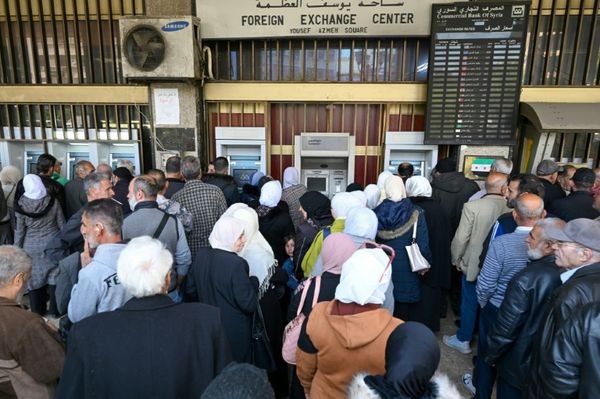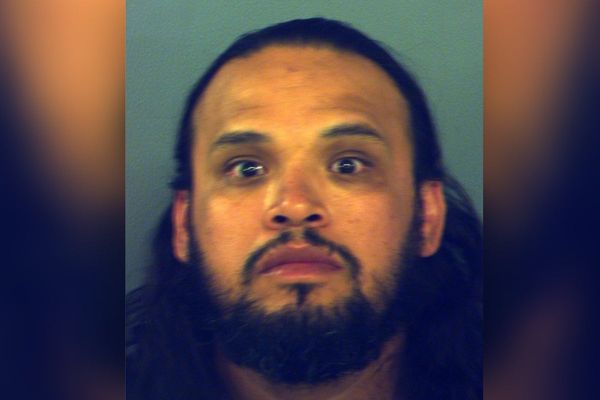
In the early – morning darkness on 11 December, a police dispatcher at California State University, Chico, smelled the distinctive odor of smoke, a trigger in this fire-prone part of far northern California.
She began combing through roughly 500 cameras on campus to find its source. Soon it became clear: the Bidwell mansion, a pink 26-room Victorian building dating to 1865 and one of the oldest buildings in the region, was on fire.
Flames were consuming the three-story structure nestled along the school’s north-eastern boundary. Just after 4am, as firefighters attempted to extinguish the fire, the top floor began to crumble.
The home had once belonged to John Bidwell, the founder of Chico, and his wife, Annie. In its heyday, it had hosted 19th-century luminaries such as Susan B Anthony, President Rutherford B Hayes, Gen William T Sherman and John Muir. Over the decades, it had become a symbol for the city of 100,000 at the northern edge of the Sacramento valley.
The fire prompted a public outpouring of grief. Residents gathered for a candlelight vigil near the charred building. Officials mourned what they described as the “heart of the community” and “the iconic structure of Chico”. The area’s representative, Doug LaMalfa, penned a tribute to the “cherished landmark” where thousands of students had learned history, and the “pioneering spirit” of the couple that had helped shape California, he wrote.
But for some, the building served as a reminder of the painful history of colonization and genocide in the region and the forced displacement of the Mechoopda, who worked as laborers for the Bidwells and upon whose land the mansion had been built.
In the 1960s, a law stripped the Mechoopda of federal recognition, and the tribe lost their 26-acre rancheria. By the time the tribe’s federal status was restored nearly three decades later, all that remained was a parcel and a cemetery, said Ali Meders-Knight, a traditional ecological-knowledge practitioner and the executive director of the California Open Lands non-profit.
“We had a cemetery and they had a mansion,” she said.
The fire sparked difficult conversations about the legacy of the Bidwells. Meders-Knight, a Mechoopda tribal member, and others in the community sought to push back against the prevailing narrative about the couple and their treatment of the Mechoopda. Others argued the Bidwells were now being portrayed unfairly. The loss has exposed a deep faultline over how the history of the community should be understood and, perhaps, set off a reckoning almost two centuries in the making.
•••
Tributes to John Bidwell and his wife, Annie, are all around Chico. Their portrait sits on the side of a downtown building. A local coffee shop, school and pizza shop are named for the couple. Annie is particularly beloved for donating thousands of acres to the city that would become Bidwell Park – one of the largest city parks in the US.
Bidwell, who went on to serve in Congress and ran for president, was long viewed as a pioneer hero and visionary, said Michael Magliari, a history professor at Chico State University and a co-author of John Bidwell and California: The Life and Writings of a Pioneer, 1841-1900.
“He was looked at as a very heroic figure, a classic American hero of the American west,” said Magliari, who is also a member of the Bidwell Mansion Association. “It was a very traditional kind of gung-ho view of the American past, how the west was won.”
Bidwell migrated to California in 1841 at age 22 after organizing and helping lead the first overland pioneer wagon crossing from the US. Upon his arrival in the Chico region in 1847, he quickly formed a relationship with the Mechoopda, a band of Maidu people who lived a few miles south of what is today the city’s downtown, and had what the tribe says “appears to have been recognized as a marriage” with an Indigenous woman named Nuppani.
By the 1850s, through the purchase of Mexican land grants, he had acquired more than 30,000 acres of land that were home to the Mechoopda. His ties with the tribe are now seen as complex.
The Mechoopda became Bidwell’s resident workforce on Rancho del Arroyo Chico, the tribe states on its website. Those who worked for Bidwell were granted homes, work that “paid the same rate as non-Indian workers” and some protection from hostile vigilantes, the tribe has said.
“The rancho also became a refuge for individuals escaping government sponsored removals of Native people from Butte County,” the tribe website states.
Indigenous people in California in the era were subjected to state-sanctioned violence and forced removals. California’s first governor in 1851 pledged that a “war of extermination” would continue “until the Indian race becomes extinct”. Gavin Newsom in 2019 apologized for the genocide against Indigenous people that killed as many as 16,000 people in the state.
In 1863, following a spate of violence in the area, white settlers in the county ordered the expulsion of all Indigenous people. Those who didn’t leave were to be shot on sight, Magliari said. Bidwell argued against such actions, and when compromise failed he asked for Mechoopda workers on his land to be spared. After his request was rejected, he told them to hide and eventually called in a cavalry unit to protect them. In what is called California’s trail of tears, the US army forcibly removed nearly 500 other Indigenous people from their lands and marched them more than 100 miles to a reservation – many died or were too sick to complete the journey and little more than half arrived.
But, the tribe’s website states, some viewed the relationship with Bidwell in less favorable terms: “The Bidwells prospered with the help of Native labor and the scene resembled that of a plantation to some.”
In 1860, Bidwell founded the city of Chico, and the role of the Mechoopda in the workforce meant that unlike tribes in other parts of the state, they had a place in the city. They worked on the Bidwell mansion, which was built with the most modern plumbing and gas lighting of the era, but were moved from their village behind the residence to an area that is now several blocks away.
They remained in that area for nearly a century until the federal government stripped them of their recognition and sold much of their land to the university.
The Mechoopda tribe declined to comment for this story.
***
Magliari argued that although Bidwell had his shortcomings, there were episodes that set him apart from his contemporaries.
While in Congress, he voted in favor of legislation to guarantee equality and freedom for formerly enslaved people in the south, Magliari said. Bidwell insisted on fair treatment for Chinese immigrants and Indigenous people and may have been one of the only white men in Gold Rush California who seriously advocated for some voting rights for Indigenous people, Magliari said.
But he also privately advocated against a treaty that would have established a reservation for the Mechoopda and other Maidu people east of Chico and likely cost him workers – even though he had signed it, local historian Michele Shover found.
In Meders-Knight’s view, he capitalized on his access to the land and power over his Mechoopda workforce to further his own ambitions, while destroying their way of life. “He did not want us to have sovereignty,” she said. “We needed to be his ranch hands.”
“He would smile in their face, have children with them, knowing the whole time that he always had the upper hand,” she added.
Reports have persisted for years that Bidwell fathered children with Indigenous women. The Bidwell Mansion Association has published accounts about his Indigenous descendants, although Magliari said there is no documented evidence of this and that his political opponents would have been eager to use that against him.
Following the fire, a negative narrative of Bidwell emerged online, Magliari said, depicting him as an enslaver, and in the same light as John Sutter or Stonewall Jackson.
“It’s kind of like we’re caught in between two cartoon versions, two warring cartoon versions of Bidwell that really reflect what’s going on on a larger scale with American history generally,” he said. “Right now, we’re going through another really divisive time in America, and our politics are really acrimonious. Everything’s extremely polarized, and our history, our understanding history, is reflected by that.
“Bidwell, locally, is caught in the middle of that,” Magliari said.
For many Indigenous people, Bidwell cannot be separated from the genocidal colonial project of which he was a part. His control over the tribe has created a legacy that persists today in how local officials and residents have interacted with the Mechoopda, Meders-Knight argues.
After regaining their federal recognition, the Mechoopda encountered fierce pushback from residents and officials when they sought to develop housing in the region, Meders-Knight said, and faced a lawsuit that derailed a planned casino for decades: “That’s why they go into the city hall and tell us where we can live. That is exactly what was modeled under John Bidwell.”
But people prefer a story about Bidwell’s legacy that validates the existence of the city of Chico, she said.
They need to believe the land was taken legitimately by John Bidwell and it was done correctly, she said. The thinking is that “there’s no harm and what happened to the natives was a shame, but he did the lesser evil because he wasn’t actually out there cutting throats”, she said. “He didn’t do the dirty work – he benefited from it, we benefit from it, but the story has to say that we’re good guys.”
•••
John Bidwell died in 1900. Annie passed away in 1918. Shortly after, the property was acquired by Chico State Teachers College and served as a dormitory for students for a decade. It remained in university hands until the state parks system took ownership of it in 1964.
Late last year, the Bidwell mansion was in the middle of a $2.3m restoration project that would see the building receive fresh exterior paint and a new roof.
Then came the fire.
In the days and weeks that followed, residents were anxious for answers about what had happened. In a city that has been at odds about how to address homelessness for years, people quickly turned their anger to unhoused people as early reports indicated the fire could have been the result of a “warming fire”. Less than a week later, however, investigators revealed they had determined the fire was an act of arson.
In early January, officials announced they had charged 30-year-old Kevin Carlson with allegedly using an incendiary device to start the fire inside the mansion. He allegedly visited the property the day before and was seen on video using cash to purchase a gas can and lighter in a nearby town, officials said. The district attorney suggested he may have had a political motive as he followed a social media channel with “communist and Marxist ideologies” and an “anti-colonialism bent”. His family described his ideology as “far left”, and said it had caused a rift in their relationship, the district attorney said.
Carlson pleaded no contest to the charge this week, and will be sentenced next month. He faces a sentence of up to 11 years in prison.
Meanwhile, it’s unclear what’s ahead for the mansion. The local newspaper, the Chico Enterprise-Record, has come out in support of rebuilding, with the publication’s editor declaring: “Our collective spirit will settle for nothing less.” A local bank donated $50,000 to a fund to rebuild or memorialize the building.
But the controversy over the community’s history, as documented by local outlets such as A News Cafe and others, has continued to simmer.
State parks officials are waiting for authorities to complete their criminal investigation and release the site before sending in engineers to determine the structural viability of what’s left.
The agency will work with the Mechoopda as well as the city and university on what’s next, and expects a long road ahead, said Aaron Wright, a public safety chief and spokesperson with state parks.
“Figuring out the future of the mansion is going to take some time,” Wright said.
Much of the site remains – the visitors’ center, architect’s house and carriage house were not damaged. If the mansion cannot be rebuilt, Magliari anticipates a number of possibilities from a reconstruction to a Mechoopda cultural center or museum, or perhaps the return of the land to the tribe. In 2022, Chico State University returned 93 acres of land to the tribe in the first such agreement in the state.
Meders-Knight hopes the community will choose another route besides rebuilding the mansion – and she wants to see people have difficult conversations about the region’s past.
“We don’t have the time or resources to build empty mansions,” she said. “We have to re-evaluate who we are and how we work together. We should do that if that’s the hard work we need to do rather than do all the hard work to rebuild an empty mansion.”
When she first learned what had happened to the mansion, Meders-Knight, who is also a basket weaver, thought of the Mechoopda baskets that had likely been destroyed. The tribe traditionally burns people’s possessions after death and she felt comforted by the idea.
“They were finally being burned and going home to the ancestors,” she said. “They were getting their things back that were being held at the mansion. Now they are free.”







